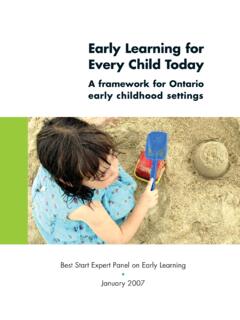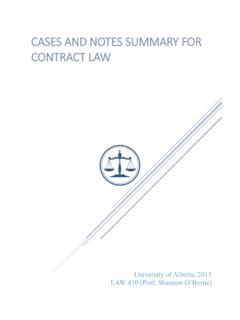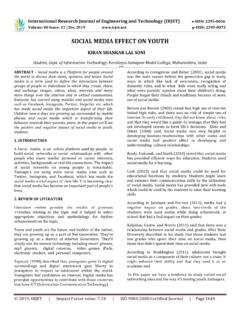Transcription of How To Use a Rapid Diagnostic Test (RDT)
1 How To Use a Rapid Diagnostic Test (RDT)A guide for training at a village and clinic levelModified for training in the use of the Generic Pf-Pan Test for falciparum and non-falciparum malariaMALARIAR apid Diagnostic Testfor P. falciparum & non-falciparum malariaDevicePf-PanGeneric Pf-PanPre pare d o n Fe b r uar y 11, 2010. V 1. 2 Support for developing this training manual was provided by the United States Agency for International Development (USAID), the Special Programme for Research and Training in Tropical Diseases (TDR) and the Australian Agency for International Development (AusAID). The views expressed are the sole responsibility of the authors and do not necessarily reflect the policies of the funding entities or World Health Organization does not warrant that the information contained in this publication is complete and correct and shall not be liable for any damages incurred as a result of its use.
2 Suggested citation: How to use a Rapid Diagnostic test (RDT): A guide for training at a village and clinic level (Modified for training in the use of the Generic Pf-Pan Test for falciparum and non-falciparum malaria). 2009. The USAID Quality Assurance Project (QAP), university Research Co., LLC, and the World Health Organization (WHO), Bethesda, MD, and ON MODiFYiNG THiS MANUAL TO SUiT YOUR cOUNTRY S MALARiA cONTROL POLicieSThis manual and the accompanying material are designed to train health workers in the safe and accurate use of malaria Rapid Diagnostic tests (RDTs). But correct RDT use is only one part of managing malaria. Health workers also need to know what steps to take after diagnosis, whether the patient is RDT-positive or negative for malaria. National policies for treating malaria differ between countries. Causes of fever also differ. For that reason, this manual addresses only diagnosis, not treatment.
3 Health workers who complete this training on RDT use will also need separate training on your country s national policy for anti-malarial drug use and for appropriate management of RDT-negative febrile cases. RDT designs also differ. These instructions and the accompanying job aid were designed using an RDT cassette specific for detection of falciparum malaria and non-falciparum malaria. If your country is using a different RDT, you may need to modify the training and job aid to fit the brand and type of RDT you are using. Particular sections of the training that might need modification include: n Section on possible false positive results; n Sections , , , and on where to add blood and buffer; n Section and Section 5 on interpreting test job aid may also need modification to fit the design, preparation and target species of the RDT in use before participants can correctly complete sections 4 and 5 of the can assist with these modifications.
4 (Contact national WHO office or of contentsGlossary of acronyms ..ivAcknowledgements ..vIntroduction to trainers on the use of this manual .. 1 Purpose .. 1 What this manual contains .. 1 How to use the manual .. 2 Materials and supplies needed .. 4 Section 1 Introduction (20 minutes).. 5 Section 2 How to use an RDT (60 minutes) .. 8 Section 3 How to take a finger-prick blood sample (30 minutes) .. 18 Section 4 Perform a malaria Rapid Diagnostic test (60 min) .. 21 Section 5 Read test results (45 minutes) .. 23 Frequently asked questions .. 26 Other useful reference materials.. 28 Job aid .. 29 Sample test #1 .. 30 Sample test #2 .. 31 Sample test #3 .. 32 Answer keys for sample tests .. 33 RDT Interpretation Chart .. 35 Blank answer sheets for sample tests .. 36ivGlossary of acronymsACT .. Artemisinin combination therapyAFRO .. WHO Regional Office for AfricaALRI .. Acute lower respiratory infectionAQ.)
5 AmodiaquineCHW ..Community health workerCQ ..ChloroquineHRP2 .. Histidine-rich protein 2 (a malaria parasite antigen)MOH .. Ministry of HealthQAP ..The USAID Quality Assurance ProjectpLDH .. Plasmodium lactate dehydrogenase (a malaria parasite antigen)RDT .. Rapid Diagnostic testSP ..Sulfadoxine-pyrimethamineURC .. university Research Co., LLCUSAID .. United States Agency for International DevelopmentWHO .. World Health OrganizationWPRO ..WHO Regional Office for the Western PacificvAcknowledgementsThis manual was written by Steven A. Harvey1 and David Bell2 based on research carried out in Zambia during 2006. Kurt Mulholland1 developed the illustrations for both the manual and the job wish to acknowledge the Zambia Ministry of Health, the Zambia National Malaria Control Centre, NMCC Directors Dr. Naawa Sipilanyambe and Dr Elizabeth Chizema, and the District Health Management Teams (DHMT) and health workers of Luangwa, Chongwe, Chibombo and livingstone districts, Zambia, for the work on which this manual is thanks to Mrs.
6 Masela Chinyama of the Zambia NMCC and Malaria Consortium, Helen Counihan of the Malaria Consortium, and Hawela Moonga of NMCC. Mrs Chinyama served as both national project coordinator and model trainer during the initial research that led to development of this manual, and to staff of the NMCC and Malaria Consortium for further trials and modifications. The training curriculum described here is based on the authors observations of trainings, later modified by observations during field use by the livingstone DHMT, Zambia NMCC and Malaria Consortium. We are grateful to Dr. Fred Masaninga, WHO malaria representative in Zambia, and Michael Macdonald of Boston university for their help in coordinating different aspects of the research and development. Thanks also to Thada Bornstein for her review of the manual s content and her insightful suggestions for improvement. We appreciate the input of Dyness Kasungami at the USAID Mission in Lusaka and the study s observers from the university of Zambia and the Ministry of Health: Susan Chileshe, Carol Chirwa, Lawrence Kaonga, Sunday Lizu, Mizzie Mkandawire, Songelo Mkandawire, Rabecca S.
7 Nkwanga, Muchacha Phiri, Mukanda Sachinayi, Dorothy Samalesu, and Ignatius Katengo Sekeseke. Funding for the development of this manual was provided by the Bill and Melinda Gates Foundation through the Foundation for Innovative New Diagnostics (FIND), the United States Agency for International Development (USAID) and the Australian Agency for International Development (AusAID). Development of the original generic manual was a joint effort of the USAID Quality Assurance Project (QAP), the Special Programme for Research and Training in Tropical Diseases (TDR), university Research Co., LLC (URC), the WHO Regional Office for the Western Pacific (WPRO), the WHO Regional Office for Africa (AFRO), and the Zambian Ministry of Health. This version of the manual was adapted by FIND and WHO/TDR with the Malaria Consortium, URC and Mario university Research Co., LLC, Bethesda, MD, WHO Regional Office for the Western Pacific, Manila, To Use a Rapid Diagnostic Test 1 PurposeThe purpose of this manual is to train community health workers (CHWs) to use malaria Rapid Diagnostic tests (RDTs) safely and effectively.
8 The manual is written for professional health workers who will be teaching volunteer CHWs how to use RDTs. The original manual from which this specific manual was adopted was developed and tested in Zambia with the Zambian National Malaria Control Centre and Zambian CHWs. Although the training is mainly intended for CHWs, it may also be useful to professional health workers new to using manual should be used with the accompanying job aid. The job aid is a set of step-by-step instructions about how to use an RDT. It contains both words and pictures. You will find a small version of the job aid at the end of this manual. Larger copies are available from or from At the end of the training, you should give each participant one or more copies of the job aid to take with them. Participants should use the job aid whenever they perform an RDT. Without the job aid, the material in this manual will not provide sufficient training.
9 You should not conduct the training without the job training takes approximately hours. Based on Rapid field testing, this training, if used with the accompanying job aid, should be sufficient to enable most CHWs to use RDTs correctly and safely. However, RDT use should be monitored in the field to ensure good Diagnostic practice and blood safety. Further revision of the material may occur following further field experience and feedback. We welcome your comments and suggestions. Please send them as an email to: ideal group size for the training is 10 15 CHWs. Conducting the training with more than 15 participants makes it difficult for a single trainer introduction to trainers on the use of this manualto provide sufficient attention to each participant, particularly during sections 4 and 5. If you plan to use this material with a group larger than 15, it is strongly recommend that you work with one or more assistants who have experience using RDTs and can help you provide one-on-one attention to participants.
10 Even with smaller groups, it would be helpful to have one or more assistants this manual containsThis manual provides step-by-step instructions for carrying out the training. The table of contents lists each section. The manual also contains a small version of the job aid, a list of frequently asked questions, sample RDTs and answer keys for those different styles of type in this manual indicate different things:Normal type like this is used to explain parts of the training to you, the trainer, and to describe learning objectives, activities, and sometimes specific things you should say to training participants. In some cases, this will include sentences you can read directly to italic type in a box like this is used to indicate instructions to you, the trainer, about how to manage the training or what to do in a particular situation. These instructions are NOT meant to be read to participants. For example, an instruction of this type might say Remind participants to consult national guidelines for use of ACT.














